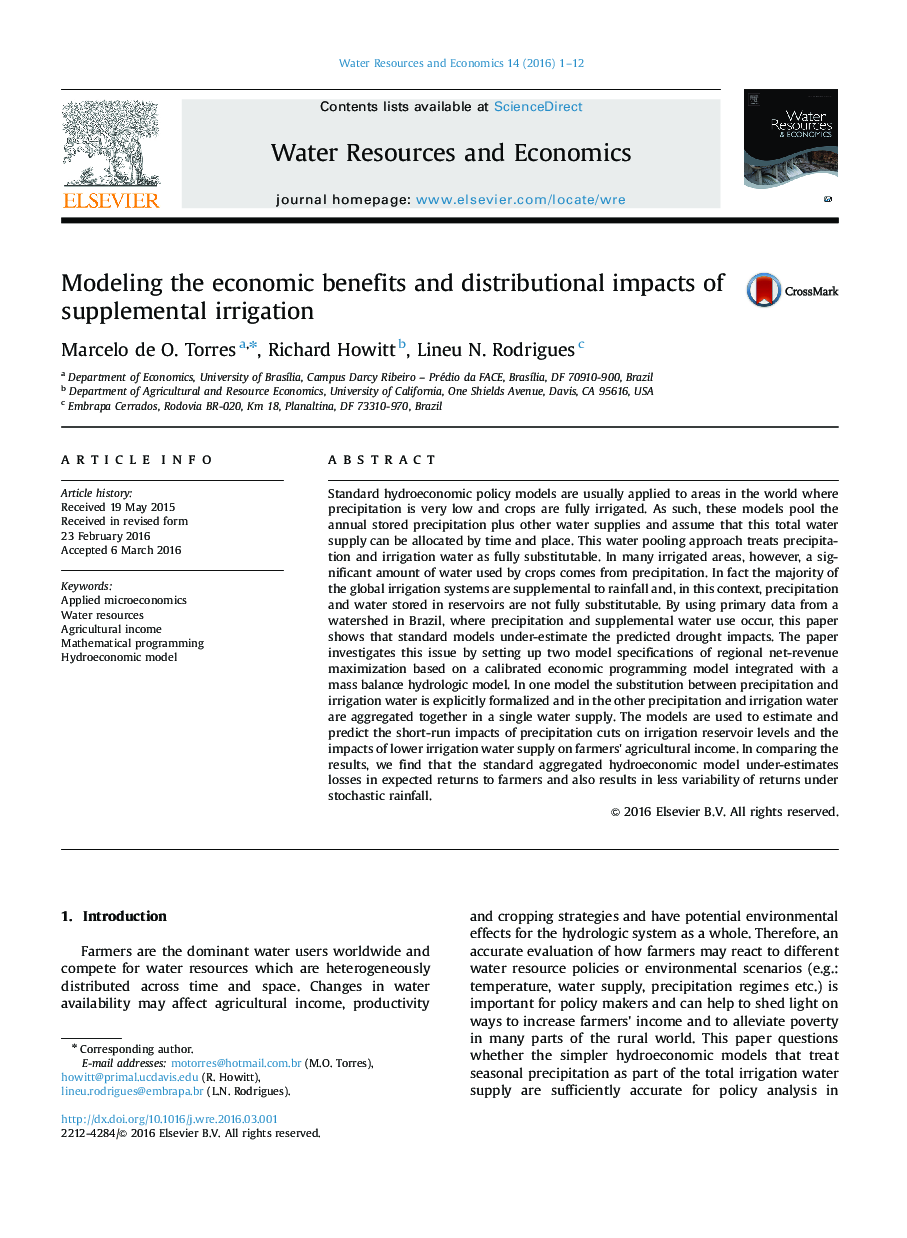| Article ID | Journal | Published Year | Pages | File Type |
|---|---|---|---|---|
| 988236 | Water Resources and Economics | 2016 | 12 Pages |
Standard hydroeconomic policy models are usually applied to areas in the world where precipitation is very low and crops are fully irrigated. As such, these models pool the annual stored precipitation plus other water supplies and assume that this total water supply can be allocated by time and place. This water pooling approach treats precipitation and irrigation water as fully substitutable. In many irrigated areas, however, a significant amount of water used by crops comes from precipitation. In fact the majority of the global irrigation systems are supplemental to rainfall and, in this context, precipitation and water stored in reservoirs are not fully substitutable. By using primary data from a watershed in Brazil, where precipitation and supplemental water use occur, this paper shows that standard models under-estimate the predicted drought impacts. The paper investigates this issue by setting up two model specifications of regional net-revenue maximization based on a calibrated economic programming model integrated with a mass balance hydrologic model. In one model the substitution between precipitation and irrigation water is explicitly formalized and in the other precipitation and irrigation water are aggregated together in a single water supply. The models are used to estimate and predict the short-run impacts of precipitation cuts on irrigation reservoir levels and the impacts of lower irrigation water supply on farmers' agricultural income. In comparing the results, we find that the standard aggregated hydroeconomic model under-estimates losses in expected returns to farmers and also results in less variability of returns under stochastic rainfall.
